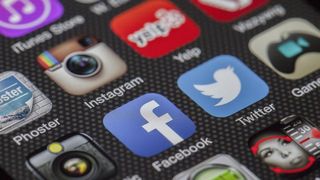How Long Does Facebook Take To Review
Keeping up with Facebook

Facebook's long-awaited integration of chat systems for Instagram and Facebook Messenger began recently, with a "small set of people able to update to the new test experience" in August. And the news should shock no one. The social media giant has been upfront about its plans to unify and allow cross-messaging between their widely popular WhatsApp, FB Messenger and Instagram for over two years. Although the feature is still for a select few in the US and it's not yet possible to separate Facebook users directly from Instagram, this is what the future plainly has in store.
Bringing together three of the world's largest messaging apps in this way - between them boasting more than 2.6 billion users - is going to redefine how users interact with each other. By integrating these three apps' infrastructures together, Mark Zuckerberg allows the separate apps to maintain their brand and audience but increase their wider utility, keeping users engaged inside the company's ecosystem.
The long-term goal is that a WhatsApp user will be able to send a message to a Messenger user without signing up to that service. While the number of channels used in our daily lives is increasing, this development will simplify communications for millions of people. Not only this, but taking a leaf from WhatsApp's book on privacy, Zuckerberg plans to extend its existing end-to-end encryption to all of its messaging platforms giving users added online security irrespective of platform.
Best user experience
As is so often the case with the best user experience (UX) design and features, this shift from synchronous to asynchronous communications will likely go unnoticed for most users. The idea that you couldn't do this before will quickly become an anachronism for most people. Brands for whom customer experience is key, should not be so blasé.
Data shows high performing Customer Experience (CX) led organizations are more than 9x more likely to integrate data from multiple sources, analyze interactions across channels and engage customers optimally across channels. This means brands meeting their customers where they are.
When it comes to customer experience, the growth of private and cross-platform interactions is a major trend. By launching Messenger for Business in 2016 and WhatsApp Business two years later, Facebook is aware of the importance of allowing brands to use their Messaging tools to reach their customers and prospects. With 89% of adults in mature markets owning a smartphone, reaching customers on their mobile device is an opportunity and also a potential stumbling block.
Channel of choice
Currently for customers, especially for those with a problem, or trying to complete a purchase, getting in touch with a business can be challenging. Customer service interactions have the reputation for customers endlessly being put on hold, receiving auto replies with a 24 hour delay to emails or being contacted on social and being referred to other channels. This is why, 75% of customers prefer to use private messaging over traditional customer service channels. What's more, just as when chatting with their friends, users want to use their channel of choice to contact companies.
Facebook's doubling down on the importance of omni-digital communication in turn will benefit companies with the internal systems to take the ensuing advantage. Companies that can access a digitally global customer view, including a conversation history across multiple Messaging channels will be able to improve average handling time, increased customer satisfaction and first contact resolution.
Asynchronous messaging
Widespread consumer adoption of messaging is true across all generations averaging 64% across millennials, Gen Xers and Boomers. In other words, customers, regardless of age, want to be able to message a business at their convenience on any device. Just as importantly, and heading back to where we began, customers expect to engage in asynchronous messaging whereby they can start a conversation via WhatsApp and then pick up that same conversation on another platform.
With PwC reporting that more than 70% of consumers think speed, convenience, helpfulness and friendliness as imperatives when interacting with a business, it is unsurprising that brands that provide united communications tend to come out on top. The option of messaging customer service agents provides consumers with instant support, quick answers, allows them to avoid phone conversations, and is faster than email.
While industry professionals marvel at the technological progress that Facebook's asynchronous messaging provides, the reality is communicating in this way feels natural to consumers. Just as normal people start a joke with a friend on Insta at home and deliver the punchline via a furtive Facebook Messenger at the office, very soon they will expect to do the same with brands. Today's consumers prefer private messaging to traditional customer service channels and good customer service means having conversations at any time, on any device and on any platform.
- Julien Rio, Senior Director of Marketing at RingCentral .
- Connect online securely with the best VPN.

As Senior Director of Marketing at RingCentral, Julien strives for empowering businesses to collaborate from anywhere and better serve customers. Keynote speaker, author and blogger, Julien regularly writes about customer experience, unified communications and marketing topics. As an experienced public speaker, he talks regularly at conferences about multiple topics related to marketing or customer care and the technologies involved.
How Long Does Facebook Take To Review
Source: https://www.techradar.com/news/keeping-up-with-facebook
Posted by: walkergeop1953.blogspot.com

0 Response to "How Long Does Facebook Take To Review"
Post a Comment